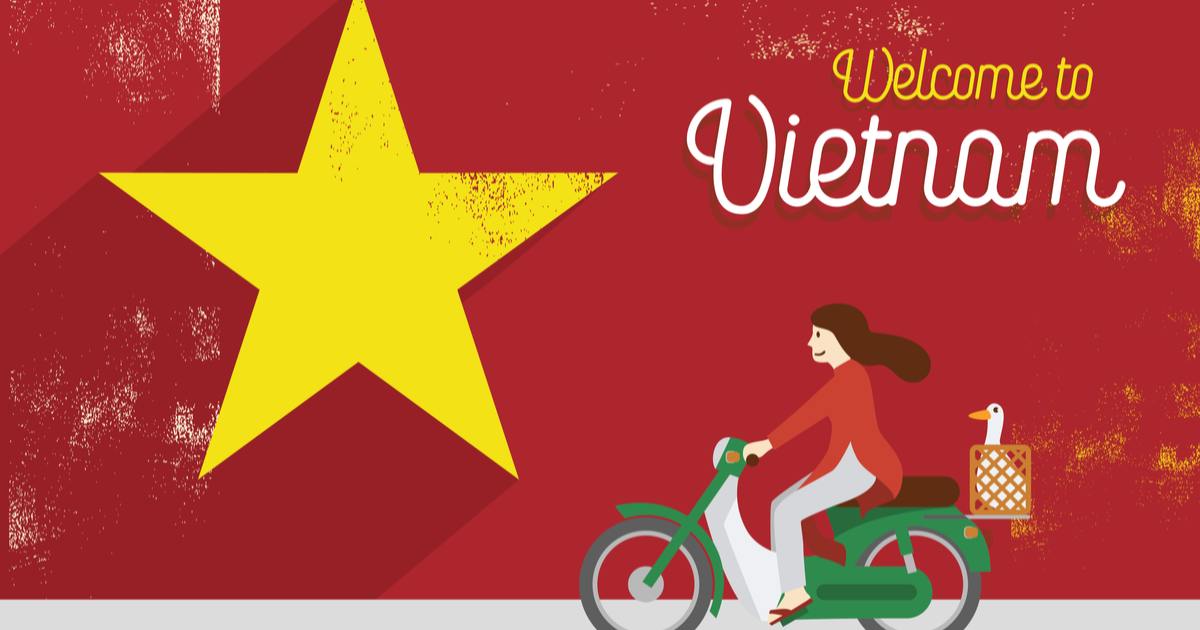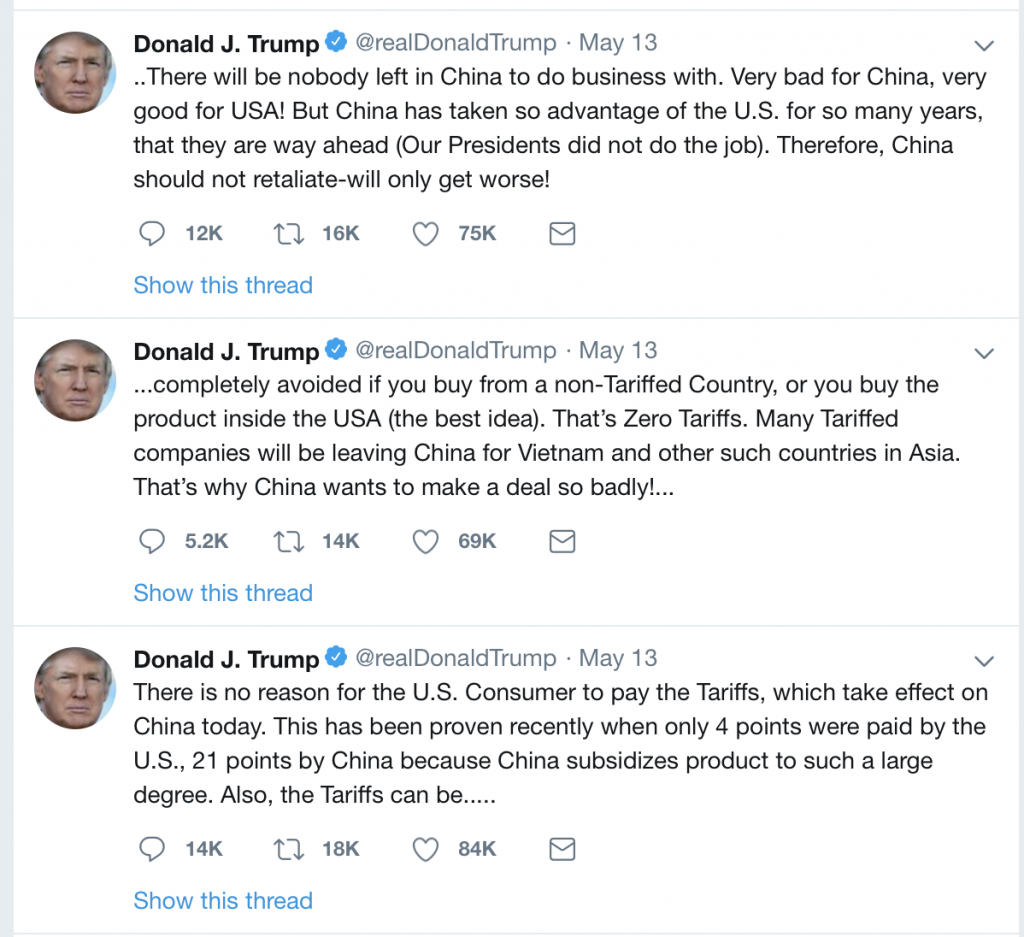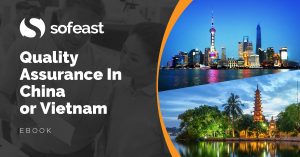A few days ago, Trump claimed that many tariffed companies would leave China for Vietnam and other such countries in Asia in this series of tweets (read from bottom to top):
In parallel, I see an Asia Briefing article entitled Why Vietnam is Overtaking China as a Destination for US Export Manufacturing, showing that this trend is already underway:
Vietnam’s exports to the US rose by 28.8 percent year on year in the first quarter of 2019, making the US the largest importer of Vietnamese goods.
Is there some truth in Trump’s tweets?
Yes, sure.
Many US importers have made efforts to start transitioning out of China, and that often means setting a foot in Vietnam. It plays out this way:
- Relatively small importers have been spending a lot of time and energy looking for export-ready Vietnamese factories, in order to edge their China risk. The reason is often simple: Vietnam is the low-cost country that looks the most like mainland China. The reasoning is, this will make for a smooth transition.
- Large importers have been requesting their key China-based suppliers (which are often Taiwan- or Hong Kong-owned) to set up operations in another country. These players look for the lowest risk of supply chain disruption. Shipping made-in-China components to Hanoi or HCMC is relatively painless in the short term, and they bet that many of these components will be available in-country in a few years. In addition, many Chinese-speaking middle managers can be recruited. So, in many cases, they settle for Vietnam.
Doesn’t Trump exaggerate the situation?
Yes, clearly.
- Vietnam is about the size of a Chinese province. Industrial parks around Ho Chi Minh City are getting quite full and prices are going up. The Hanoi area also counts many factories, but there is a limit to the number of new projects it can welcome.
- Ben Simpfendorfer from Silk Road Associates (a consultancy specializing in global supply chains) estimated that the land mass occupied by industrial areas in China’s Pearl River Delta is the equivalent of that in the greater Ho Chi Minh City area + that in the greater Bankok area + that in the greater Jakarta area. And, remember, the whole coast of China is full of factories!
- The US only buys about 20 or 25% of China-made goods in value (I am not sure about the statistics here, but it is probably not difficult to find). The goods shipped to the European Union (the first export market for China), to Russia, to Canada, to Mexico, to Malaysia, to Australia, etc. are not affected.
What if the trade war intensifies between the US and China?
(By the way, based on today’s news, that seems to be the direction things are taking.)
It will accelerate the efforts to relocate manufacturing activities. The demand for Vietnam production will increase (and similarly in Indonesia, Thailand, Mexico, and so on and so forth).
Wages and rents will rise – it might actually drive some non-US buyers back to China for pricing reasons – especially if the RMB keeps depreciating, as has been the case over the past few days.
The only certainty here is risk and instability. Forecasting what will happen is no easy exercise.
Your thoughts?
I invite you to get involved in the conversation by leaving a comment below. I want to hear how the ‘trade war’ is affecting your business, and what you’re doing to stop or mitigate its negative effects.
Get expert help to improve YOUR product quality from suppliers in China or Vietnam. Read: Quality Assurance In China Or Vietnam For Beginners
Grab your free copy of Sofeast’s eBook and learn the common traps new importers from China or Vietnam fall into, and how to avoid or overcome them in order to get the best possible production results. It also outlines a proven quality assurance strategy that you can follow in order to have better control over your product quality, covering:
- Finding Suitable Suppliers
- Defining your Requirements before Production Starts
- Don’t Skip the New Product Introduction Process
- Regular Quality Inspections (Trust but Verify)
- Tying Payments to Quality Approvals
Sounds good? Hit the button below to get your copy now:



